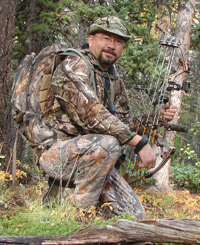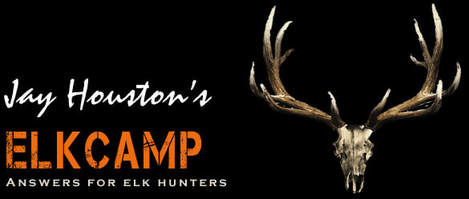Scouting

Bill Claspell
It happens every year about this time. A whole lot of people head into the woods, look for tracks, find some elk, play with their calls, and then come back in a couple of weeks, ready for the start of the season, to find out that all the elk they thought they had pegged have turned tail and headed for parts unknown. It’s the annual scouting ritual, and while it can be helpful for some aspects of the hunt, doing the wrong things while scouting can do much more harm than good for your hunt.
Over Scouting
How many days in the woods do you actually need to have in the woods, prior to the hunt, before you’re comfortable with an area? Some hunters may answer that question with a double digit number, but most savvy hunters know that quality beats quantity in most scouting situations. For example, hunters who do their homework prior to the scouting trip will already have a good idea about where the water sources, food sources, and sheltered dark timber areas lie before they ever step foot on the ground in their areas. They will get this information through topographical maps and aerial and satellite images that are available through bookstores and on-line resources.
Using this information, they can predict where the elk in the area will probably feed, where they will go to water, and the places where they will bed. These hunters will also check harvest statistics, hunter densities, and success rates per season to help them decide if their area is worth meeting in person.
Hunters who don’t do this homework and prefer the boots on the ground approach, will spend numerous days in the field looking for tracks, locating water and food sources, and checking out the timber for bedding areas. All those days in the field contribute to more human presence in your hunting area and more human presence leads to a serious lack of animals come hunting time.
Calls
What about calling prior to the season? Some guys like to head out into the woods in early and mid August and try to call a few animals in, for no other reason than to get a confidence booster for when the season starts. We all like to see animals come into our calls, but when you’re sole mission in life is to find animals to hunt, leave the calls at home. It doesn’t pay to educate the very animals that you’ll be trying to call in later in the month.
The Mission
The purpose behind scouting isn’t necessarily to locate where the animals are right now, but to locate the places where they will be during the hunting season. There’s not much point in scouting an area in July that won’t be hunted until November because animal behaviors will be affected by other hunters, weather, and changes in food sources. So instead of trying to find animals now, figure out where they will be when your season opens.
Understanding how your elk will behave during certain times of the year will help you in this regard. To figure them out, you’ve got to ask yourself, “Where would these elk hole up once the shooting starts?” Look for the most remote basins, dark timbered ridges, and out of the way locations that will be out of the pressure, and begin your search there. Find food and water source for those areas, escape routes such as saddles or long ridges, and plan to be there when things get going.
The very best places to find pressured elk are the places where pressure doesn’t exist. The elk in your area are incapable of running out of the state, as many people would have you believe, but they are capable of putting a few miles between themselves and danger before they begin to feel safe again. Find those safe zones and you’ll be in business.
Boots on the Ground
There really is no experience for having boots on the ground in your hunting area, but if you’ve done your homework before hand, you won’t have to trample around so much to find the best places to hunt. Tread lightly with preseason scouting and you may find that getting your homework done in time really does pay off. You will not likely find their names in books or magazines, but brothers Bill and Lew Claspell are two of the most successful elk hunters that I know...and I know a few. Bill has been a contributing writer for ElkCamp.com almost since day one. Lew was a neighbor and good friend of mine in Colorado Springs. Both are primarily bowhunters and both know what they are talking about when it comes to elk and elk hunting....Jay
Those who seek knowledge kill more elk than those who do not! For a lot more information on elk and elk hunting please consider purchasing one or all of my top-selling books on the subject.Click here.
It happens every year about this time. A whole lot of people head into the woods, look for tracks, find some elk, play with their calls, and then come back in a couple of weeks, ready for the start of the season, to find out that all the elk they thought they had pegged have turned tail and headed for parts unknown. It’s the annual scouting ritual, and while it can be helpful for some aspects of the hunt, doing the wrong things while scouting can do much more harm than good for your hunt.
Over Scouting
How many days in the woods do you actually need to have in the woods, prior to the hunt, before you’re comfortable with an area? Some hunters may answer that question with a double digit number, but most savvy hunters know that quality beats quantity in most scouting situations. For example, hunters who do their homework prior to the scouting trip will already have a good idea about where the water sources, food sources, and sheltered dark timber areas lie before they ever step foot on the ground in their areas. They will get this information through topographical maps and aerial and satellite images that are available through bookstores and on-line resources.
Using this information, they can predict where the elk in the area will probably feed, where they will go to water, and the places where they will bed. These hunters will also check harvest statistics, hunter densities, and success rates per season to help them decide if their area is worth meeting in person.
Hunters who don’t do this homework and prefer the boots on the ground approach, will spend numerous days in the field looking for tracks, locating water and food sources, and checking out the timber for bedding areas. All those days in the field contribute to more human presence in your hunting area and more human presence leads to a serious lack of animals come hunting time.
Calls
What about calling prior to the season? Some guys like to head out into the woods in early and mid August and try to call a few animals in, for no other reason than to get a confidence booster for when the season starts. We all like to see animals come into our calls, but when you’re sole mission in life is to find animals to hunt, leave the calls at home. It doesn’t pay to educate the very animals that you’ll be trying to call in later in the month.
The Mission
The purpose behind scouting isn’t necessarily to locate where the animals are right now, but to locate the places where they will be during the hunting season. There’s not much point in scouting an area in July that won’t be hunted until November because animal behaviors will be affected by other hunters, weather, and changes in food sources. So instead of trying to find animals now, figure out where they will be when your season opens.
Understanding how your elk will behave during certain times of the year will help you in this regard. To figure them out, you’ve got to ask yourself, “Where would these elk hole up once the shooting starts?” Look for the most remote basins, dark timbered ridges, and out of the way locations that will be out of the pressure, and begin your search there. Find food and water source for those areas, escape routes such as saddles or long ridges, and plan to be there when things get going.
The very best places to find pressured elk are the places where pressure doesn’t exist. The elk in your area are incapable of running out of the state, as many people would have you believe, but they are capable of putting a few miles between themselves and danger before they begin to feel safe again. Find those safe zones and you’ll be in business.
Boots on the Ground
There really is no experience for having boots on the ground in your hunting area, but if you’ve done your homework before hand, you won’t have to trample around so much to find the best places to hunt. Tread lightly with preseason scouting and you may find that getting your homework done in time really does pay off. You will not likely find their names in books or magazines, but brothers Bill and Lew Claspell are two of the most successful elk hunters that I know...and I know a few. Bill has been a contributing writer for ElkCamp.com almost since day one. Lew was a neighbor and good friend of mine in Colorado Springs. Both are primarily bowhunters and both know what they are talking about when it comes to elk and elk hunting....Jay
Those who seek knowledge kill more elk than those who do not! For a lot more information on elk and elk hunting please consider purchasing one or all of my top-selling books on the subject.Click here.
